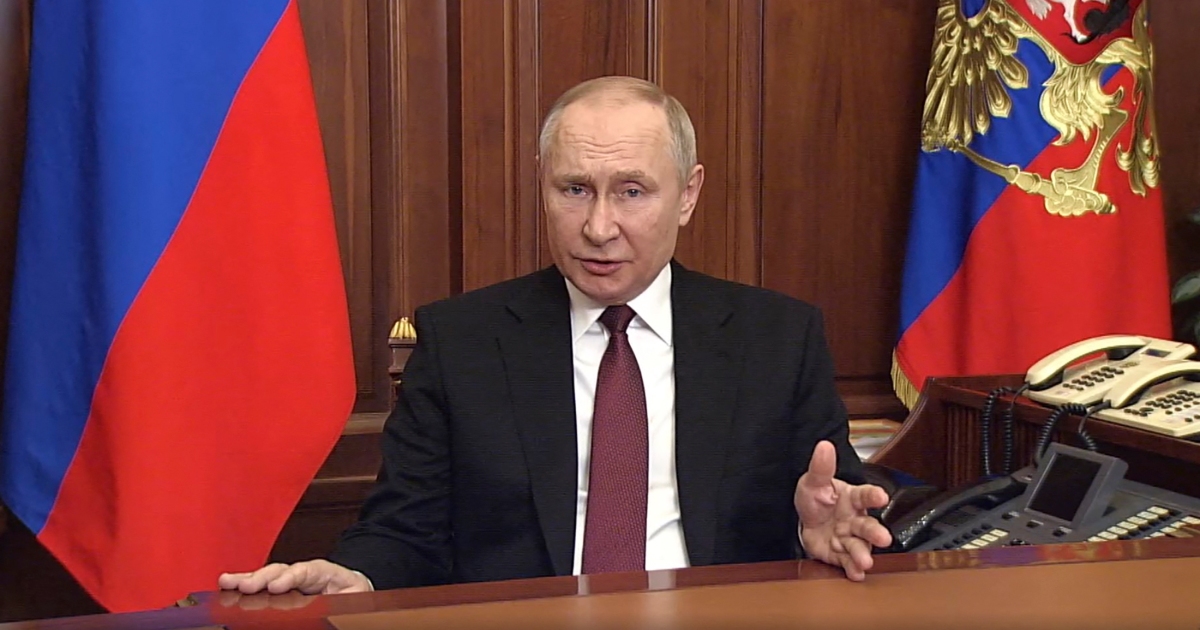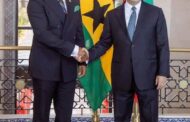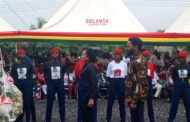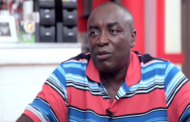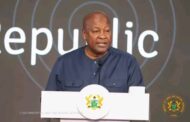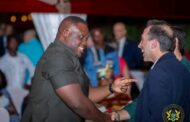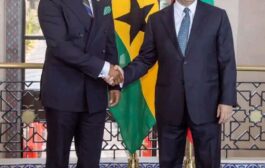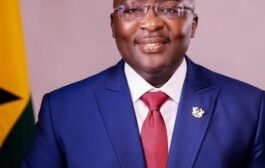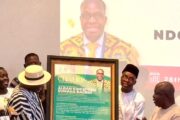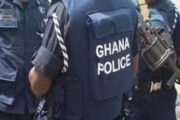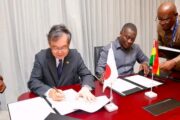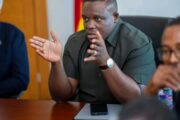When Vladimir Putin shattered the peace in Europe by unleashing war on a democracy of 44 million people, his justification was that modern, Western-leaning Ukraine was a constant threat and Russia could not feel “safe, develop and exist”.
But after weeks of bombardment, thousands of deaths and an exodus of millions of refugees, the question remains: what is his war aim and is there a way out?
Why has Putin invaded Ukraine?
The goals he set at the start of Russia’s invasion appear to have been watered down during the course of a war that he assumed would be swiftly won. He could not even admit it was an invasion or a war, preferring the fiction of a “special military operation”.
But what is clear is that he sees this as a pivotal moment in Russian history. “Russia’s future and its future place in the world are at stake,” says foreign intelligence chief Sergei Naryshkin.
The Russian leader’s initial aim was to overrun Ukraine and depose its government, ending for good its desire to join the Western defensive alliance Nato.
He told the Russian people his goal was to “demilitarise and de-Nazify Ukraine”, to protect people subjected to what he called eight years of bullying and genocide by Ukraine’s government. “It is not our plan to occupy the Ukrainian territory. We do not intend to impose anything on anyone by force,” he insisted.
But there were no Nazis and no genocide, and Russia has imposed brutal force on dozens of towns and cities and united Ukrainians in opposition to its occupation.
The bombardment continues – but latest reports from peace talks suggest Russia is no longer seeking to overthrow the government and is instead aiming for a neutral Ukraine.

Why Putin wants a neutral Ukraine
Since Ukraine achieved independence in 1991, as the Soviet Union collapsed, it has gradually veered to the West – both the EU and Nato.
Russia’s leader aims to reverse that, seeing the fall of the Soviet Union as the “disintegration of historical Russia”.
He has claimed Russians and Ukrainians are one people. “Ukraine never had a tradition of genuine statehood,” he asserted, denying Ukraine its history.
In 2013 he pressed Ukraine’s pro-Russian leader, Viktor Yanukovych, not to sign a deal with the European Union, prompting protests that ultimately ousted the Ukrainian in February 2014.
Russia retaliated in 2014 by seizing Ukraine’s southern region of Crimea and triggering a rebellion in the east, backing separatists who have fought Ukrainian forces in an eight-year war that has claimed 14,000 lives.
There was a ceasefire, and a 2015 Minsk peace deal that was never implemented. Just before his invasion, President Putin tore up the peace agreement and recognised two Russian-backed statelets as independent from Ukraine.
As he sent in the troops, he accused Nato of threatening “our historic future as a nation”, claiming without foundation that Nato countries wanted to bring war to Crimea.
Is there a way out of this war?
Ukrainian presidential adviser Mykhailo Podolyak believes a ceasefire could start in the coming days because Russian forces are stuck in their current positions.
Both sides have spoken positively of progress in negotiations, and Mr Podolyak says Russia’s president has softened his demands.
At the start of the war, the Russian leader wanted Ukraine to recognise Crimea as part of Russia and to recognise the independence of the separatist-run east. Ukraine would have to change its constitution to guarantee it would not join Nato and the EU.
The future status of Crimea and the Russian-backed statelets in Luhansk and Donetsk is still far from being resolved, but they may not be a deal-breaker if the two sides agree to address that issue at a later date.
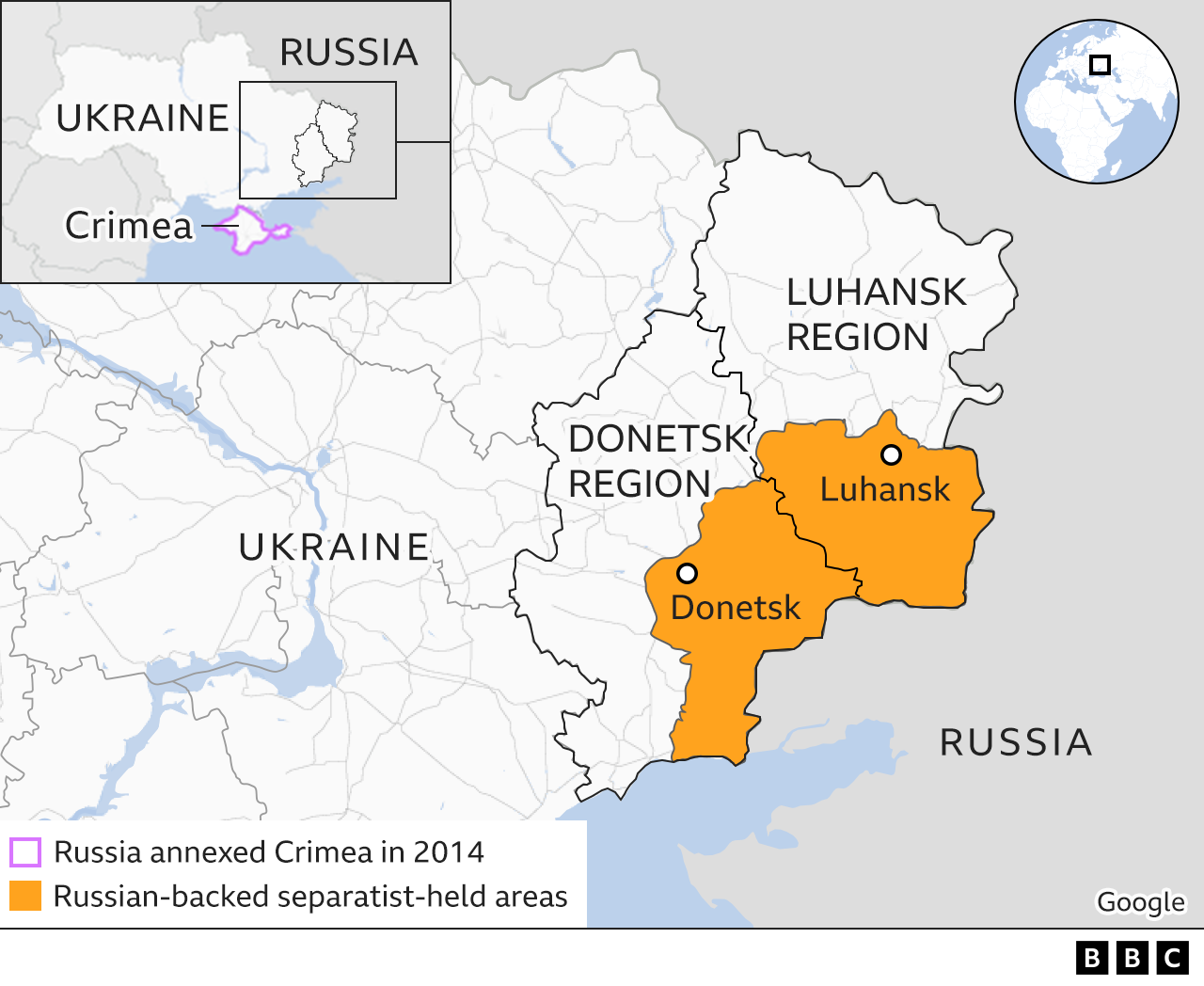
Russia does appear to have accepted it cannot depose Ukraine’s leadership and replace it with a puppet government, as exists in Belarus. President Volodymyr Zelensky said at the start of the war he had been warned “the enemy has designated me as target number one; my family is target number two”.
“It feels like [Putin] will have to accept a much more limited list,” says Tatiana Stanovaya, of analysis firm RPolitik and the Carnegie Moscow Center.
That is because Russia is considering a “neutral, demilitarised” Ukraine with its own army and navy, along the lines of Austria or Sweden, which are both EU members. Austria is neutral, but Sweden is not. In fact it is non-aligned and takes part in Nato exercises.
Not everyone is convinced Russia is negotiating in good faith. France’s foreign minister says Moscow should declare a ceasefire first, because you do not hold talks “with a gun to your head”.
What are Ukraine’s demands?
Ukraine’s requirements are clear, says the presidential adviser: a ceasefire and the withdrawal of Russian troops, but also legally binding security guarantees that would give Ukraine protection from a group of allied countries that would actively prevent attacks and “take an active part on the side of Ukraine in the conflict”.
Securing Russian military withdrawal to pre-war positions will not only be a Ukrainian demand, it will also be a red line for the West, which will refuse to accept another of Russia’s “frozen conflicts”, says Marc Weller, professor of international law and former UN mediation expert.
Ukraine has also softened its stance since Russia’s invasion, with President Zelensky saying that Ukrainians now understood that Nato would not admit them as a member: “It’s a truth and it must be recognised.”

“We are working on documents that the presidents will be able to discuss further and sign. Obviously this is coming some time soon because this is the only way to end this war,” Mr Podolyak told US broadcaster PBS.
Will Putin reach a deal with Nato?
If anything, the Russian president has doubled down on his loathing of the West and its 30-member defensive military alliance. He may be considering a compromise with Ukraine, but for him the West has one aim – to split society in Russia and ultimately destroy it.
Ahead of the war, he demanded that Nato turn the clock back to 1997 and reverse its eastward expansion, removing its forces and military infrastructure from member states that joined the alliance from 1997 and not deploying “strike weapons near Russia’s borders”. That means Central Europe, Eastern Europe and the Baltics.
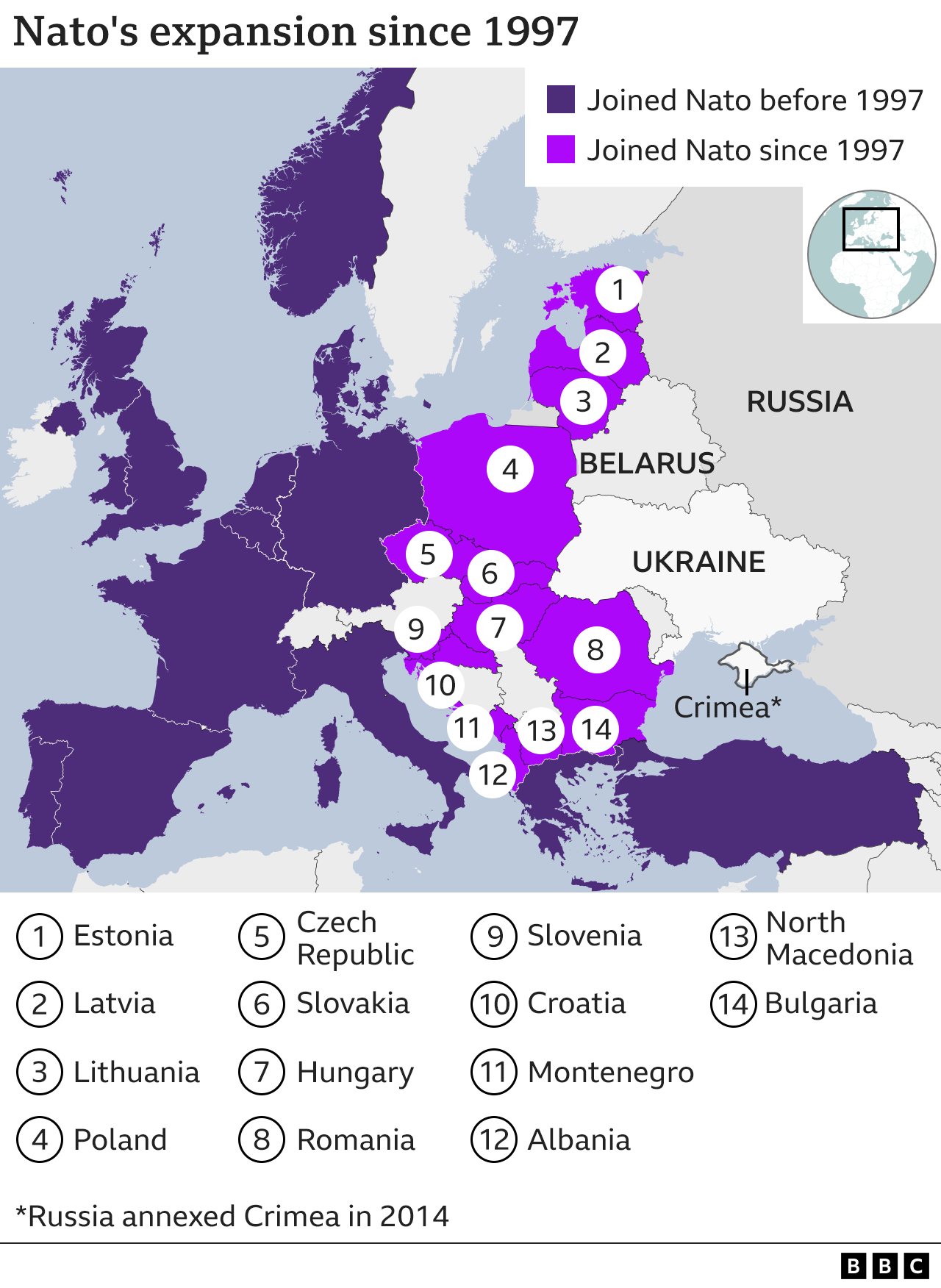
In President Putin’s eyes, the West promised back in 1990 that Nato would expand “not an inch to the east”, but did so anyway.
That was before the collapse of the Soviet Union, however, so the promise made to then Soviet President Mikhail Gorbachev only referred to East Germany in the context of a reunified Germany. Mr Gorbachev said later that “the topic of Nato expansion was never discussed” at the time.
Having witnessed Mr Putin’s willingness to lay waste European cities to achieve his aims, Western leaders are now under no illusion.
Germany’s chancellor Olaf Scholz believes Russia’s president “wants to take over Europe according to his world view” and President Joe Biden has labelled him a war criminal. Both Mr Scholz and France’s Emmanuel Macron have spoken of a continent at a turning point in its history.
Before the war, Russia demanded all US nuclear arms be barred from beyond their national territories. The US had offered to start talks on limiting short- and medium-range missiles, as well as on a new treaty on intercontinental missiles, but there is little chance of that happening for now.
Tatiana Stanovaya fears a spiral in a new Cold War confrontation: “I have very firm feelings that we should get prepared for a new ultimatum to the West which will be more militarised and aggressive than we could have imagined.”
What next for Russia?
President Putin has been stunned by the scale of the Western response to his invasion. He knew Nato’s members would never put boots on the ground in Ukraine, but he could not have guessed the extent of the sanctions that are already having a dramatic effect on Russia’s economy – and he is furious.
The EU, US, UK and Canada targeted Russia’s economy in a variety of ways:
- Russia’s central bank has had its assets frozen and major banks are shut out of the international SWIFT payment transfer network.
- The US has banned imports of Russian oil and gas; the EU aims to cut gas imports by two-thirds within a year; and the UK aims to phase out Russian oil by the end of 2022
- Germany has halted approval on Russia’s Nord Stream 2 gas pipeline, a major investment by both Russia and European companies
- Russian airlines have been barred from airspace over the EU, UK, US and Canada
- Personal sanctions have been imposed on President Putin, Foreign Minister Sergei Lavrov and many other individuals
No peace deal with Ukraine will bring these sanctions to an end, and Vladimir Putin knows that. Instead he has turned on Russians who have opposed the war.
Almost 15,000 anti-war protesters have been jailed and virtually all independent media has been silenced.
There is no meaningful political opposition left as they have either fled the country, or in the case of opposition leader Alexei Navalny, they have been jailed.
“The Russian people will always be able to distinguish true patriots from scum and traitors,” says Russia’s president.
Source: BBC



